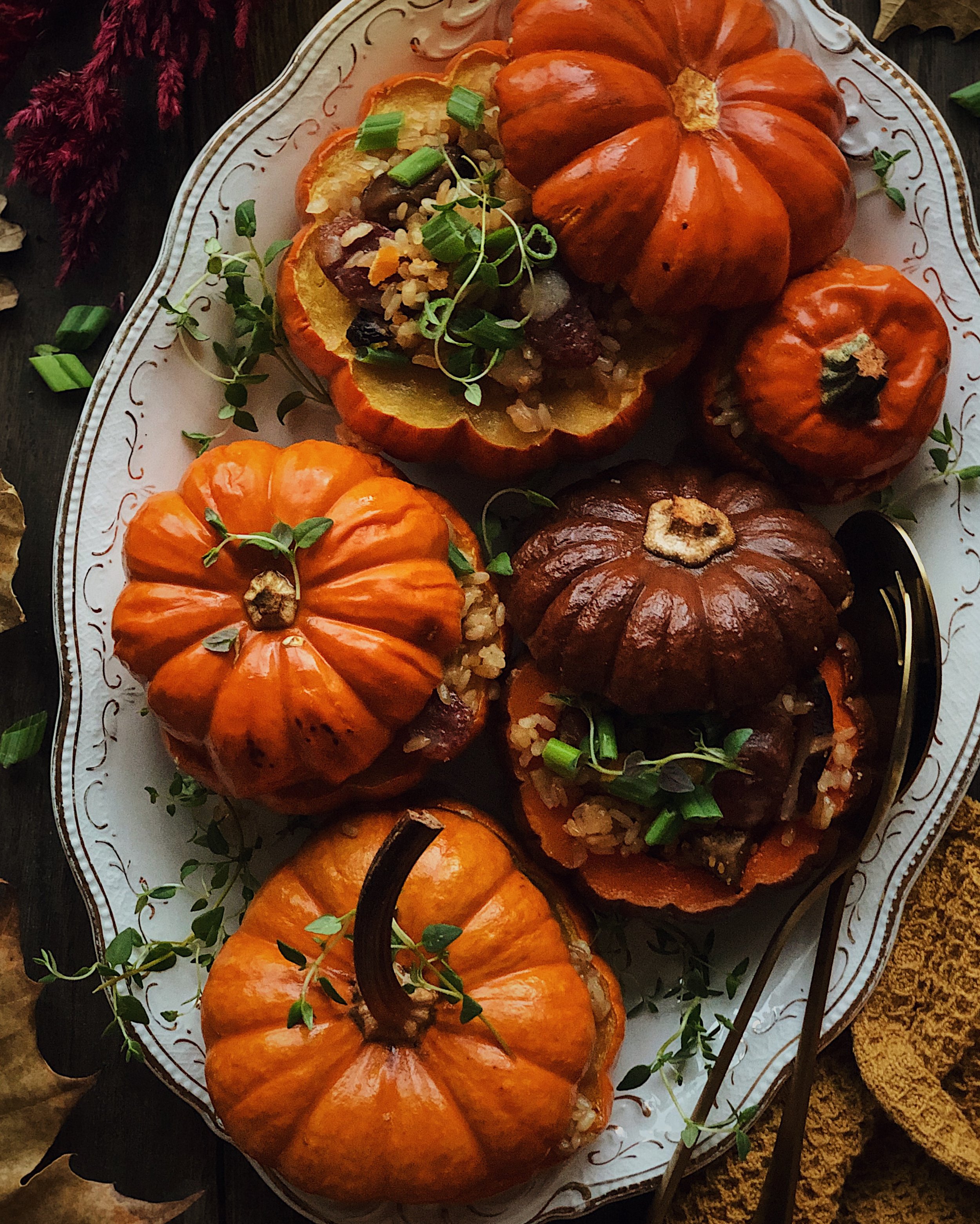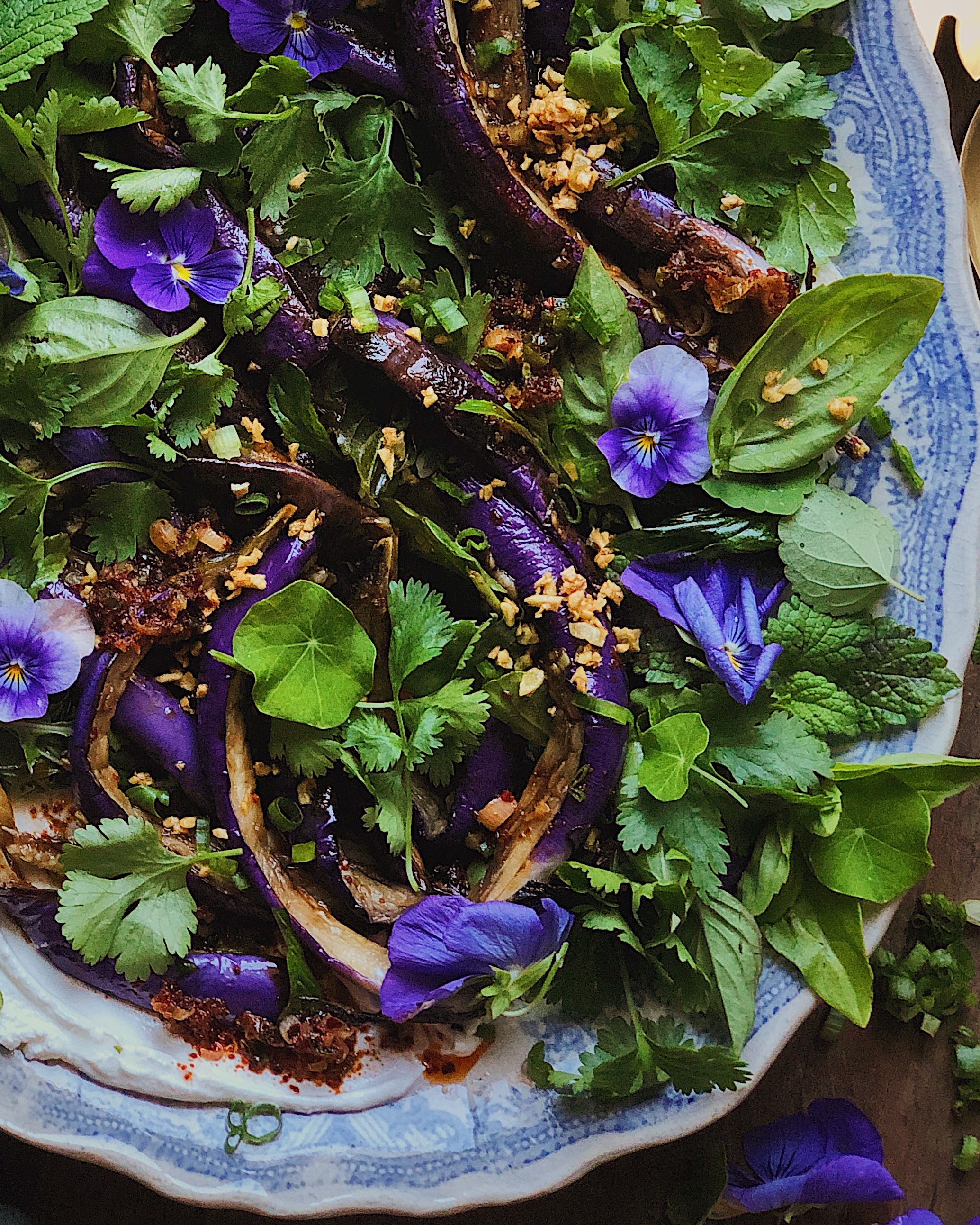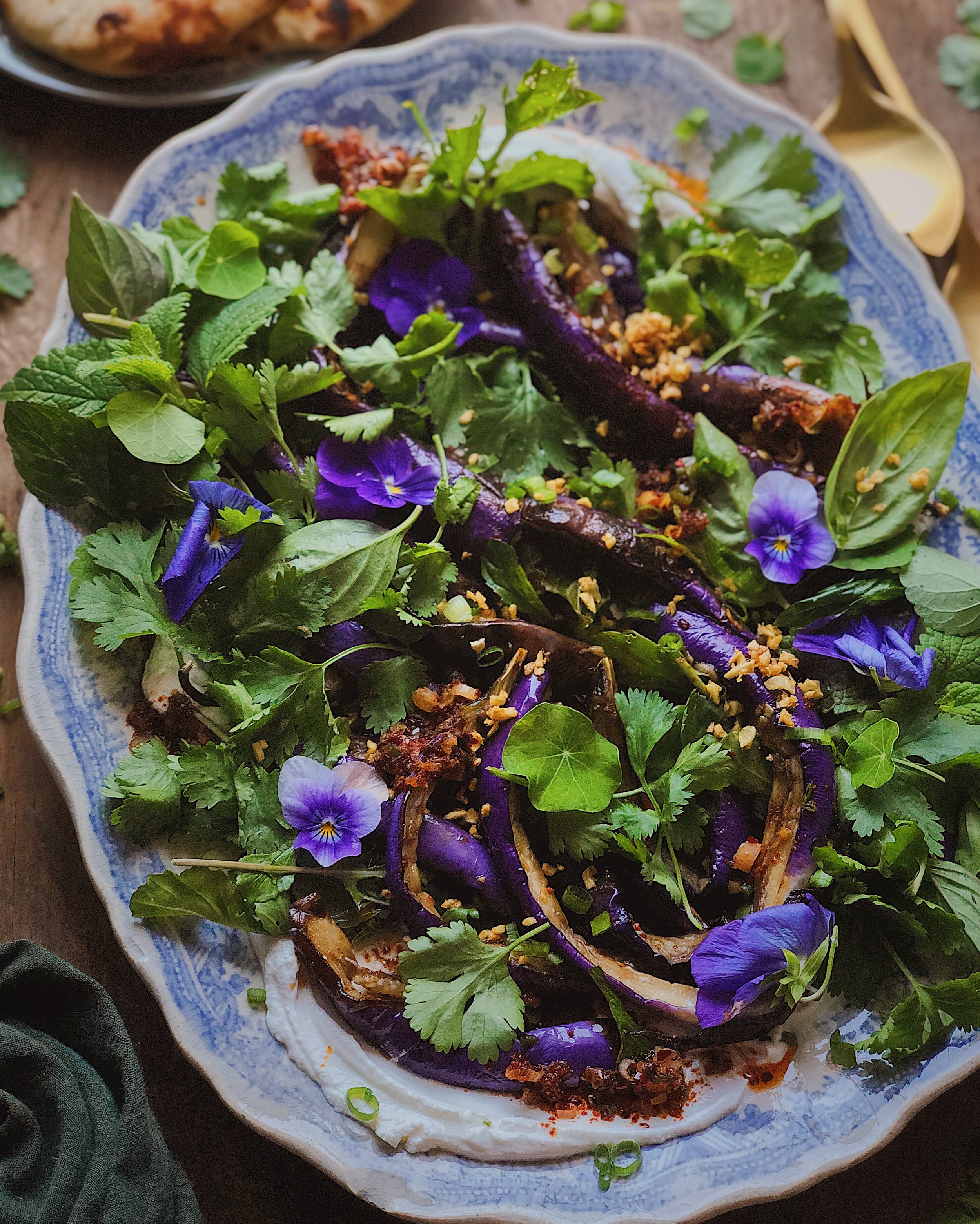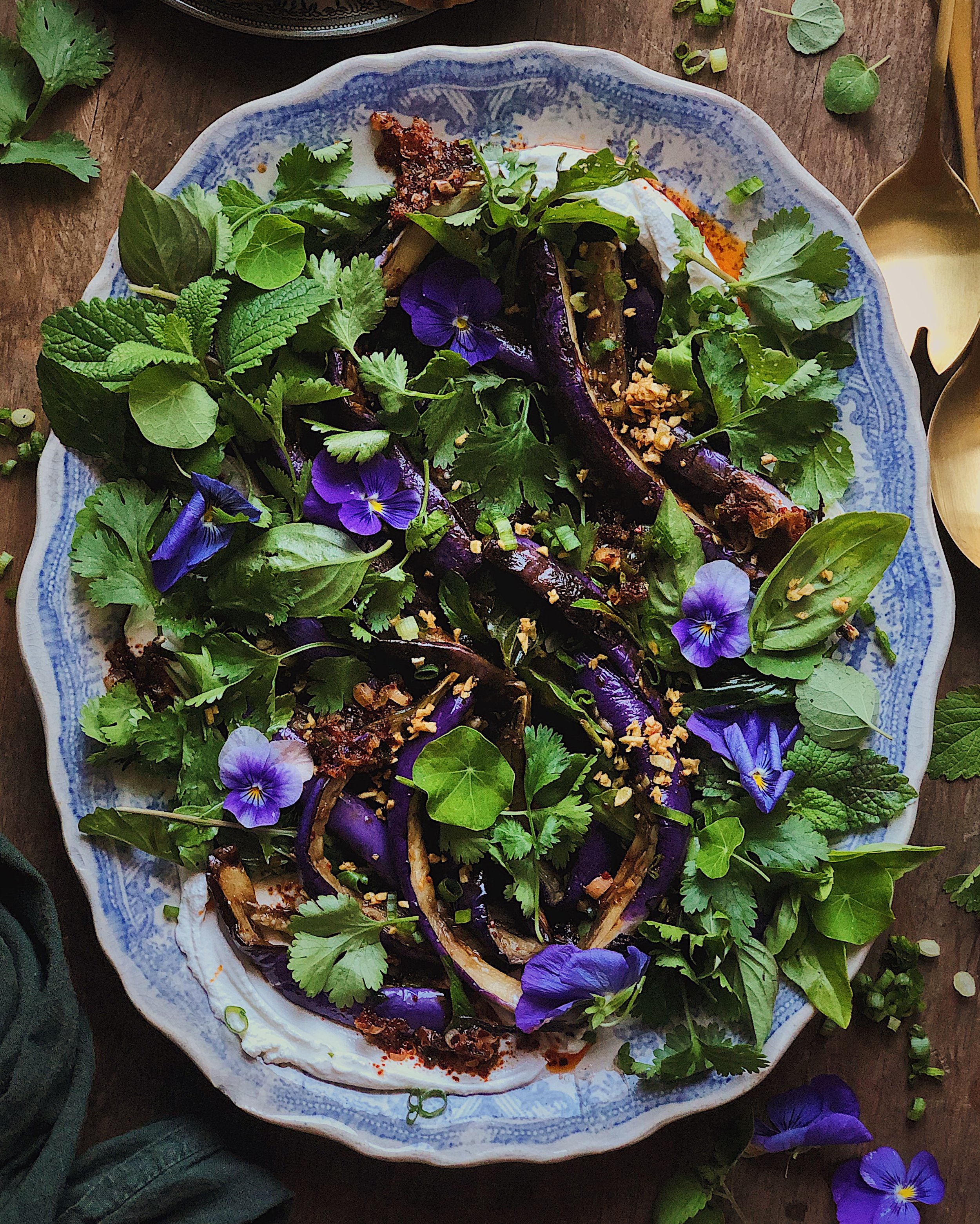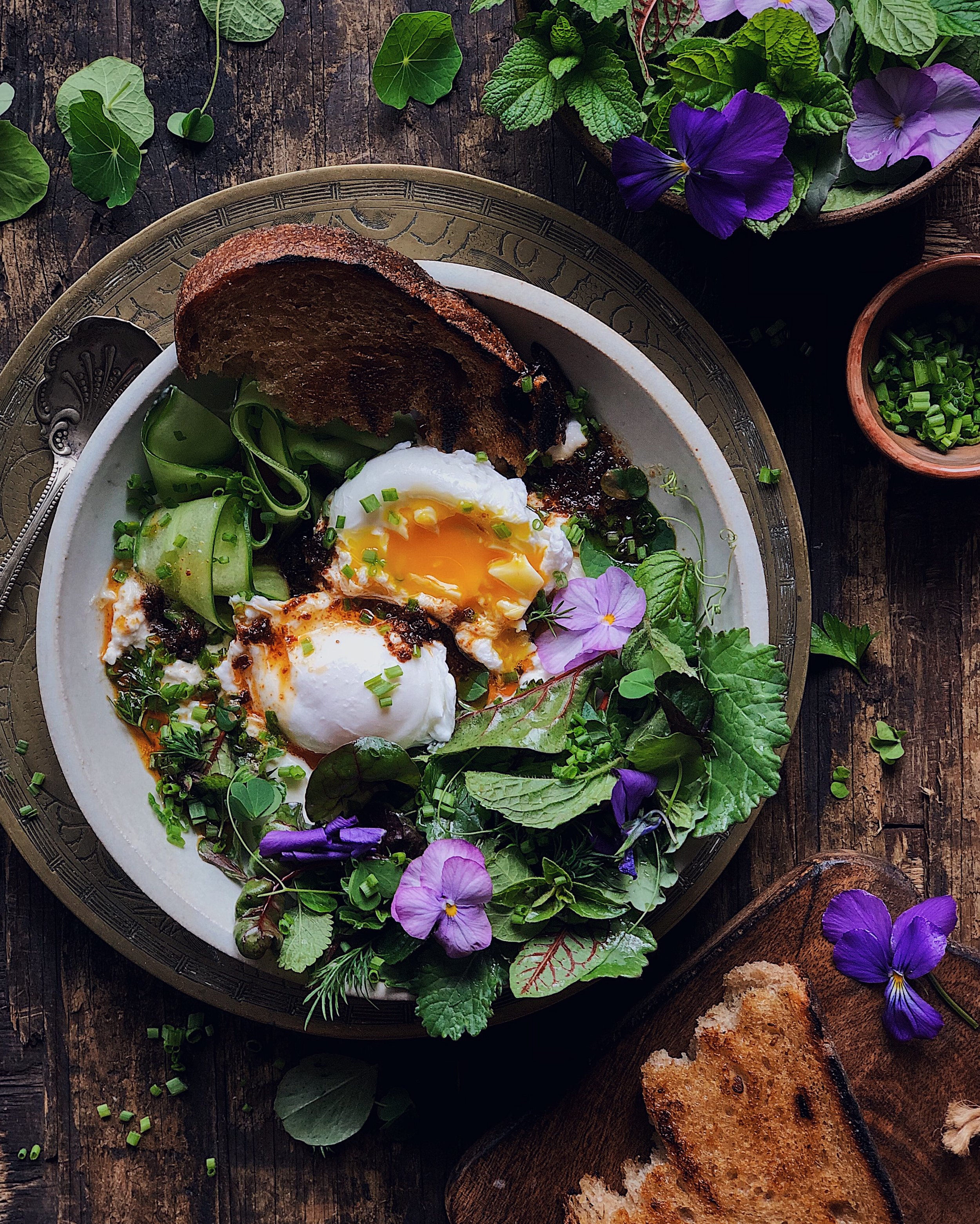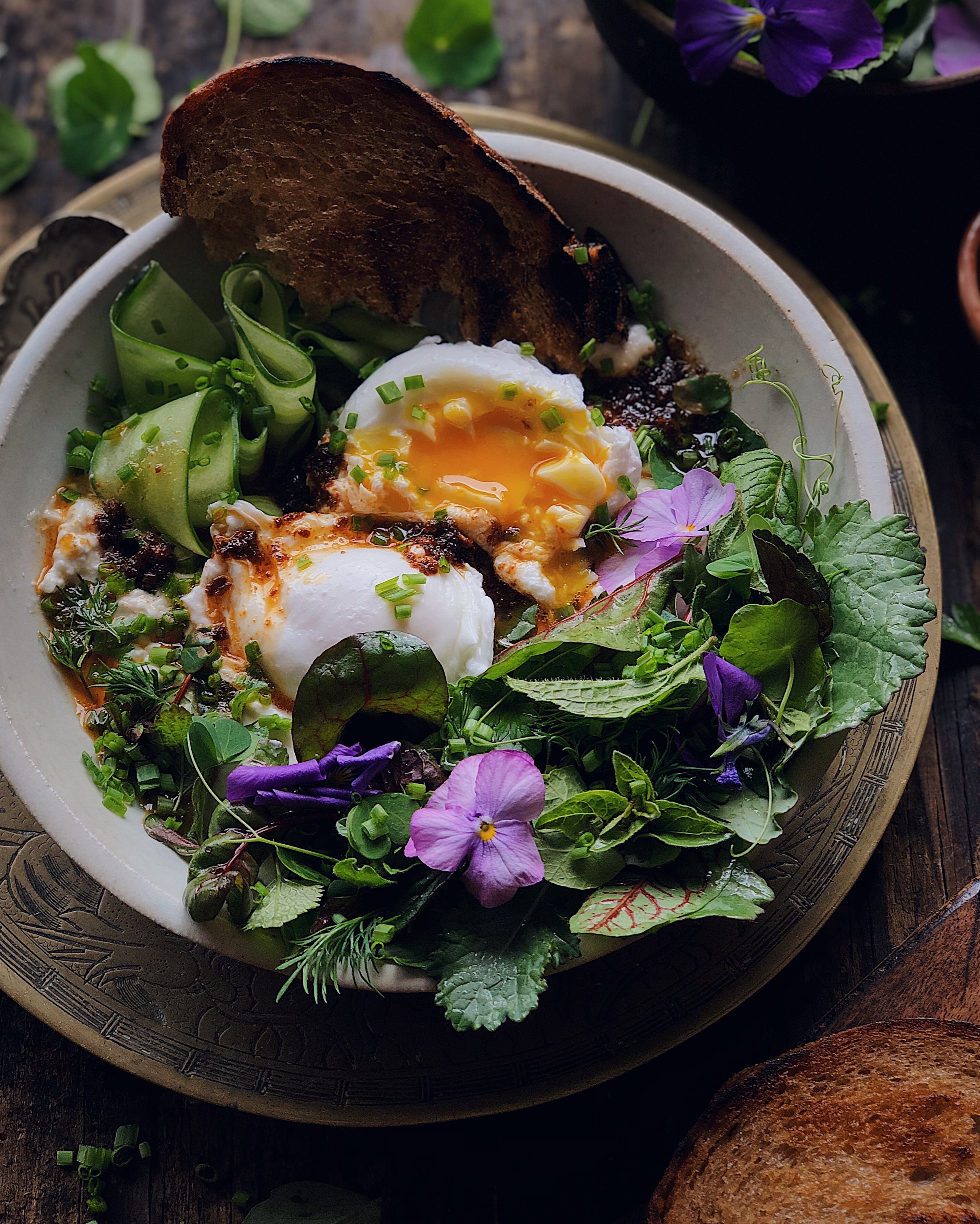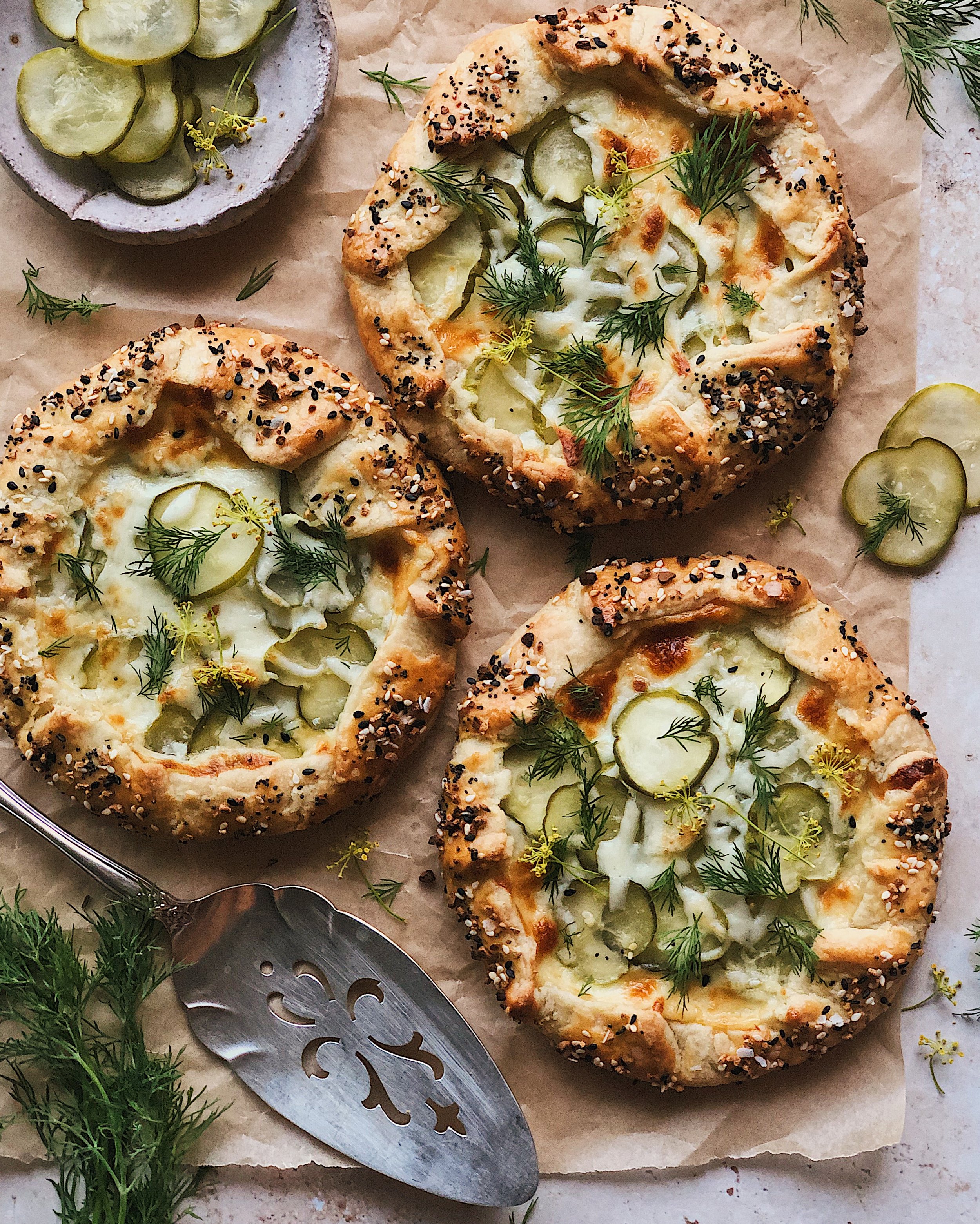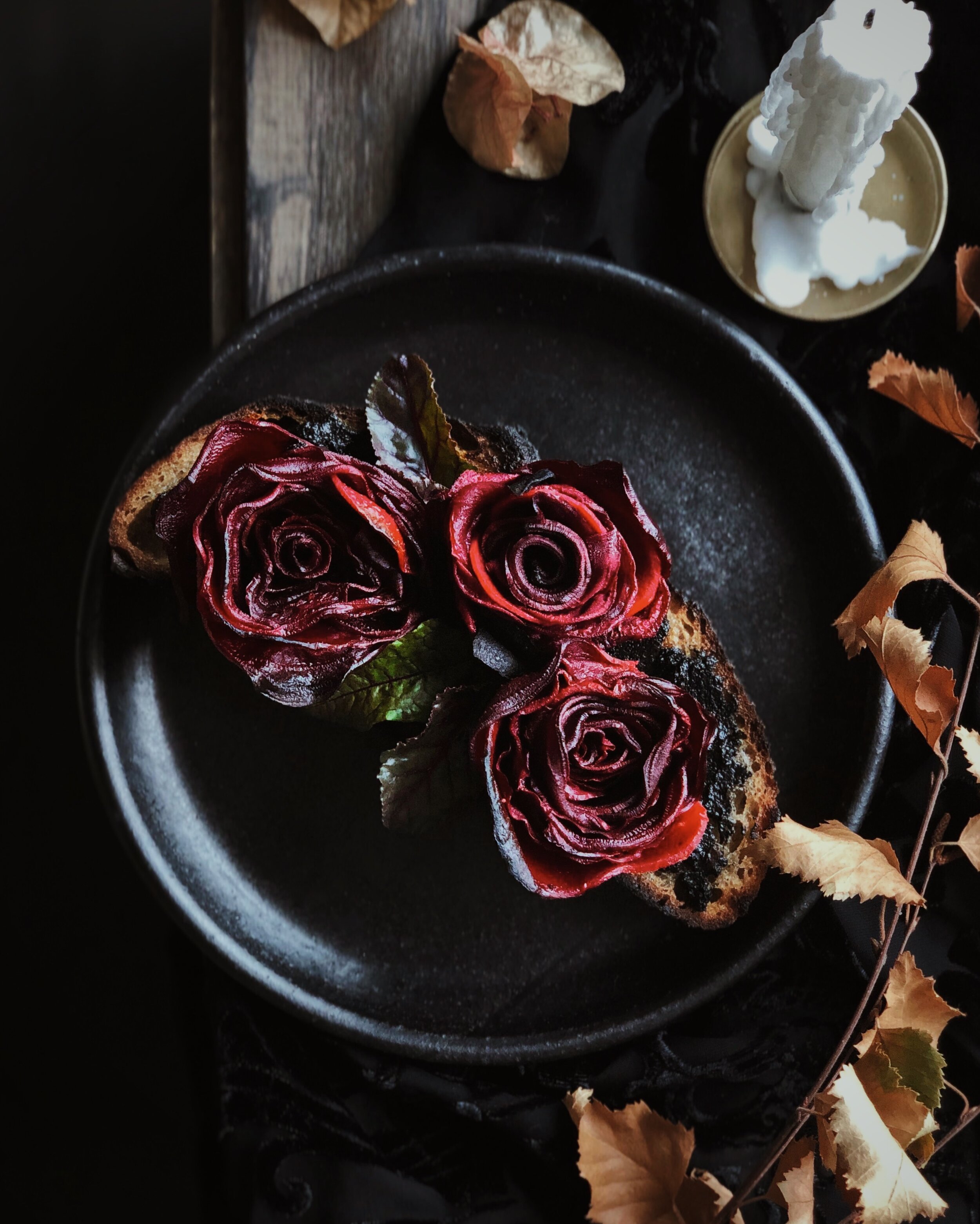One-Pan Çılbır-Inspired Poached Eggs Yogurt Bowl with Burst Tomatoes and Chili Butter
/Here is my latest riff on my ongoing obsession with çilbir, which is known in English as Turkish eggs. Çilbir is a dish that, from what I’ve read, dates back to the Ottoman Empire, and it is a dish of garlicky yogurt topped with poached eggs and then drizzled with a chili butter made with a Turkish chili. This—and the various offshoots I’ve come up with—is my favorite type of breakfast.
In this lazier version, I opted to just use regular yogurt straight out of the refrigerated container to make things easier. But to make up for the lack of garlic in the base, instead, I top the poached eggs and yogurt bowl with blistered cherry tomatoes. While I eagerly await for tomatoes to be in season once summer rolls around, this recipe makes the best of even sub-par off-season cherry tomatoes by letting them burst in oil and melted chili butter so the flavors that are present get concentrated and complex. Be warned that it does cause a bit of splatter when you’re dealing with juicy tomatoes in a pan with hot oil but it is totally worth it.
This is one of those recipes that doesn’t need precise measurements. After all, it’s a lazy morning recipe, and to me that means not having to find or wash your measuring spoons. You can fill the bowl with Greek yogurt, or not. Go big on the chili powder, or don’t. Have a few extra springs of herbs left over from some other overly-precise recipe? Use them here. In the photos, I used dill, micro cilantro, and flowers from the three-cornered leek that I foraged near a creek. Chive flowers would be amazing here too, as the light onion-y flavor goes really well with the dish. But just use what you have and follow your heart with this one.
This super easy idea only requires one little (8-inch) pan to do everything you need to make a luxurious breakfast that will surely impress others and more importantly, yourself. The use of this pan can be broken down into three phases.
The three phases of this One-Pan Breakfast:
Poaching the eggs: It might take a bit of practice to get it just right but poaching eggs in a shallow pan allows the egg whites to stay tidy and gives you a great looking poached egg. After the water is boiling, I add a splash of white vinegar and turn the heat down for a gentle simmer. Then I crack the eggs into small bowls, and gently tip them into the pan near opposite edges. After that, I turn the heat back up to medium-low for a more vigorous simmer and cook the eggs for 3 minutes before scooping them out onto a paper towel. (If you accidentally don’t fill the pan with enough water to fully submerge your eggs, you can just use a spoon to gently baste the tops with the boiling water.) If you are continuing on with the recipe and eating it right when it’s assembled, I find it is not necessary to plunge the eggs in an ice bath. If making multiple servings, you’ll obviously want a pan wide enough to keep some separation in between eggs.
Toasting the bread: This phase is actually optional but trust me, you’ll want bread to scoop and mop up all that rich egg yolk, yogurt, and wonderful melted chili butter. I like to put enough olive oil in the pan to coat the bottom and then essentially fry one side of the bread slices in it. I let one side get crisp and keep the other side untoasted so it stays more flexible for making a scooping motion with the contents of the breakfast bowl.
Making the tomatoes and chili oil topping: This phase involves cooking the cherry tomatoes in hot oil until the skins blister and they explode, releasing and concentrating their juices. Then the heat gets turned down and those juices get to mingle with sizzling butter and chili powder before the mixture gets poured over the yogurt and eggs. I use Korean gochugaru for the chili powder because it’s what I have in a huge shaker that I always keep out on the kitchen counter. Aleppo chili pepper powder would also be perfect for this, but you can use what you like.
Awkwardly Vague instructions for One-Pan Cilbir-Inspired Poached Eggs with Burst Tomatoes and Chili Butter
Ingredients
Greek yogurt
white vinegar, for poaching eggs (optional)
2 eggs
extra virgin olive oil
2 small slices of bread (optional, but recommended)
a handful of cherry/grape tomatoes
a pinch of kosher salt
1–2 tbsp butter
1–2 tsp chili powder (gochugaru or another variety of your choice)
fresh herbs or microgreens (optional)
Procedure
Scoop some Greek yogurt into a shallow bowl, bowl plate, or blate. Use the back of the spoon to create swooshes where the chili butter will be able to pool.
Make the poached eggs: Fill the pan with water and bring to a boil. Add a small amount of vinegar. Turn the heat down to low. Crack each egg into a small bowl. Gently tip the eggs into the pan near opposite edges. Turn the heat up to medium-low and poach for 3 minutes. Remove immediately with a slotted spoon and place the eggs on paper towels to drain excess water. Then place them on top of the yogurt. Carefully pour away the water from the pan and allow any residue to evaporate.
Toast the bread: Add enough olive oil to coat the base of the pan and set the heat to medium-high. Add the bread slices and toast until the desired crispness. If desired, repeat with the other side of the toasts.
Cook the toppings: Add a generous splash of olive oil into the pan and heat it on high. Carefully add a handful of tomatoes and season with salt. Allow the skins to char and blister, occasionally tossing the tomatoes around in the pan. (Note: there will be oil splatter, so please be careful.) Once most of the tomatoes look like they have burst, turn the heat down to low and add the butter. Once the butter starts to foam, add the chili powder. Use a spatula to gently stir the contents of the pan and incorporate the chili powder with the butter. Continue stirring until all the butter is sizzling.
Pour the tomato and chili butter mixture over the eggs. Top with fresh herbs or microgreens, if using.
Enjoy with the toasts on the side for dipping and scooping.
Lastly, if you are as obsessed with çilbir as I am, you may also want to check out my other variations: poached eggs in burrata and sambal butter, and Turkish eggs with charred tomatoes and sweet peppers.















